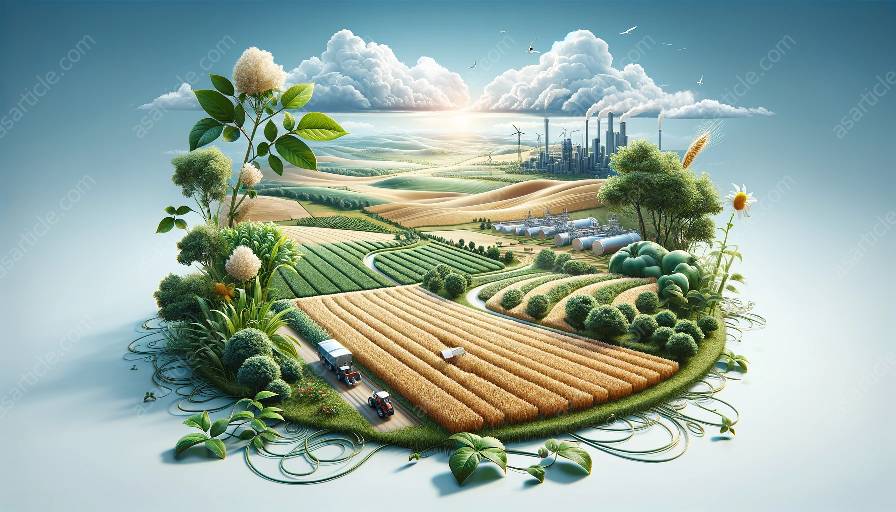Greenhouse and nursery production play a vital role in the fields of floriculture, landscape architecture, and agricultural sciences. By delving into this fascinating topic, we can gain a deeper understanding of the intricate processes involved in growing and nurturing plants, exploring innovative practices, sustainability, and the art of creating beautiful green spaces.
Overview of Greenhouse and Nursery Production
Greenhouse and nursery production involve the cultivation and propagation of plants, with a primary focus on ornamental and landscaping species. This includes the production of flowers, shrubs, trees, and other decorative plants. It serves as the foundation for various industries, including floriculture, landscape architecture, and agricultural sciences.
With the demand for ornamental plants and green spaces consistently increasing, the importance of greenhouse and nursery production cannot be overstated. From providing a wide range of plants for beautifying urban environments to contributing to the agricultural sciences through research and innovation, greenhouse and nursery production is a multifaceted and dynamic field.
Floriculture and Greenhouse Production
Floriculture is the branch of horticulture that is dedicated to the cultivation of flowering and ornamental plants for commercial and decorative purposes. Greenhouse production plays a crucial role in meeting the demands of the floriculture industry by creating controlled environments for optimal plant growth. Greenhouses provide protection from adverse weather conditions, pests, and diseases, allowing for year-round production of high-quality floral products.
By integrating the principles of floriculture with greenhouse production, practitioners can explore innovative methods to enhance crop quality, increase production efficiency, and meet the diverse needs of consumers. From cultivating vibrant cut flowers to nurturing potted plants, greenhouse production forms the backbone of the floriculture industry, contributing to the creation of stunning floral arrangements and maintaining green spaces.
Landscape Architecture and Nursery Production
Landscape architecture revolves around the design, planning, and management of outdoor spaces, integrating both natural and built elements. Nursery production provides the foundational plant material essential for creating captivating landscapes, including parks, gardens, residential areas, and commercial developments. The collaboration between landscape architecture and nursery production is crucial for achieving sustainable, functional, and aesthetically pleasing environments.
Through the careful selection and cultivation of plant species, nursery production supports the realization of landscape architectural designs, encompassing a diverse range of ornamental trees, shrubs, groundcovers, and perennials. By incorporating sustainable practices and considering ecological factors, the partnership between landscape architecture and nursery production contributes to the creation of thriving green spaces that harmonize with their surroundings.
Agricultural Sciences and Greenhouse/Nursery Innovations
Within the realm of agricultural sciences, greenhouse and nursery production serve as hubs of innovation, driving advancements in plant breeding, propagation techniques, pest management, and environmental sustainability. The collaborative efforts between agricultural scientists and greenhouse/nursery professionals contribute to the development of disease-resistant varieties, environmentally friendly production practices, and efficient resource utilization.
Exploring the integration of cutting-edge technologies, such as automated climate control systems, hydroponic cultivation, and precision irrigation, demonstrates the intersection of agricultural sciences with greenhouse and nursery production. These innovations not only enhance productivity but also address emerging challenges related to climate change, resource conservation, and food security, underscoring the essential role of agricultural sciences in the evolution of greenhouse and nursery practices.
Sustainability in Greenhouse and Nursery Production
The sustainability of greenhouse and nursery production is a pivotal consideration in today's agricultural landscape. By implementing eco-friendly cultivation practices, water conservation strategies, and energy-efficient technologies, the industry can minimize its environmental impact while meeting the demands for high-quality plants.
Adopting sustainable approaches, such as integrated pest management (IPM), organic fertilization, and renewable energy utilization, supports the long-term viability of greenhouse and nursery production. Moreover, the responsible management of waste, the preservation of biodiversity, and the promotion of ecological resilience further exemplify the commitment of the industry to sustainable and ethical practices, aligning with the principles of agricultural sciences and landscape architecture.
The Art of Growing and Caring for Plants
At its core, greenhouse and nursery production encapsulate the art of growing and caring for plants, encompassing a delicate balance of science, creativity, and craftsmanship. The expertise required to propagate and nurture plants, coupled with an understanding of environmental factors and consumer preferences, reflects the intersection of science and art within the industry.
By embracing the principles of aesthetics, functionality, and ecological awareness, professionals in greenhouse and nursery production uphold the tradition of creating vibrant, resilient plant varieties that contribute to the beauty of our surroundings. Whether it involves crafting captivating floral arrangements, curating diverse plant collections, or designing sustainable landscapes, the artistry of greenhouse and nursery production resonates with the essence of floriculture, landscape architecture, and agricultural sciences.
Conclusion
Greenhouse and nursery production form the cornerstone of floriculture, landscape architecture, and agricultural sciences, representing a dynamic and multifaceted field that integrates art, science, and innovation. The intricate processes involved in greenhouse and nursery production contribute to the creation of vibrant green spaces, the cultivation of diverse plant species, and the advancement of sustainable practices. By exploring this captivating topic, we gain insight into the pivotal role of greenhouse and nursery production in shaping our natural and built environments, inspiring creativity, and fostering a deeper appreciation for the world of plants.

